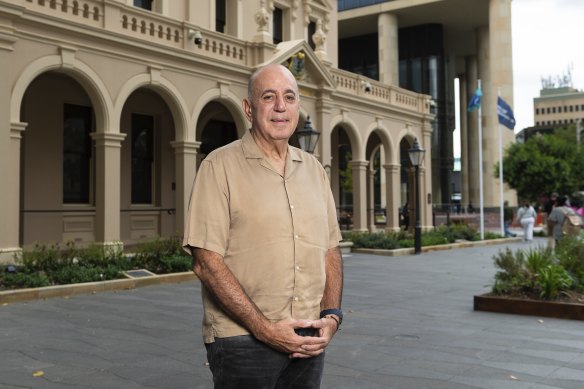
Despite serious questions about the state of the local government sector in NSW, it is difficult to begrudge the modest pay rises awarded to hardworking mayors and councillors.
The NSW Local Government Remuneration Tribunal has granted an increase of 3.75 per cent in fees payable to councillors and mayors in the state’s 128 councils, effective July 1. City of Sydney councillors could earn between $30,720 and $45,070 while Lord Mayor Clover Moore will earn $269,970 in the next financial year.

Pierre Esber, lord mayor of Parramatta.Credit: Rhett Wyman
In Parramatta, councillors will receive between $20,500 and $37,960, while Lord Mayor Pierre Esber could earn between $43,530 and $122,640 on top of his councillor salary. As major metropolitan councils, Blacktown and Canterbury-Bankstown councillors can increase their take-home income to between $20,500 and $35,890, while mayors will be able to receive between $43,530 and $110,970. Smaller municipalities, Mosman and Burwood, will pay councillors up to $22,540, while mayors qualify for an additional rate between $21,770 and $49,170.
But the increases – broadly aligned with the country’s 3.6 per cent inflation rate and in keeping with last month’s Fair Work Commission decision to increase minimum wages by 3.75 per cent – were not enough for Local Government NSW. The group argued fees should be increased by 10 per cent in order to “address the historic undervaluation of the work performed by elected representatives in local government in NSW” and reverse the “fee erosion” it said occurred under the previous Coalition government.
But NSW councillors have become regarded as poorly paid community workers as federal governments have amassed ever more control over traditional state issues like health, education, and workplace relations over the years and state governments have increasingly moved into the space of local governments.
Loading
At the same time, state and federal governments have forced a lot of cost-shifting onto councils, handing them responsibility for infrastructure, services and regulatory functions without providing sufficient supporting funding. One result is that local government is abandoning many of the community services it took on after growing the business from traditional rubbish, kerbs and channels.
The constant impoverishment has made the most pressing issue with councils the fees they are actually charging ratepayers, not what the councillors are being paid. Variations to rate ceilings far outpace pay rises.
For instance, the Independent Pricing and Regulatory Tribunal pegged the 2024–25 core rate between 4.5 per cent to 5.5 per cent, but last month it gave the green light to eight NSW councils, allowing them to hike rates. Among them: Randwick City Council will raise rates by 11.6 per cent, Willoughby City Council by 15 per cent, and Tamworth Regional Council by 36.6 per cent (over two years). Kempsey Shire Council asked for 42.7 per cent but won approval for 24.09 per cent over two years.



























